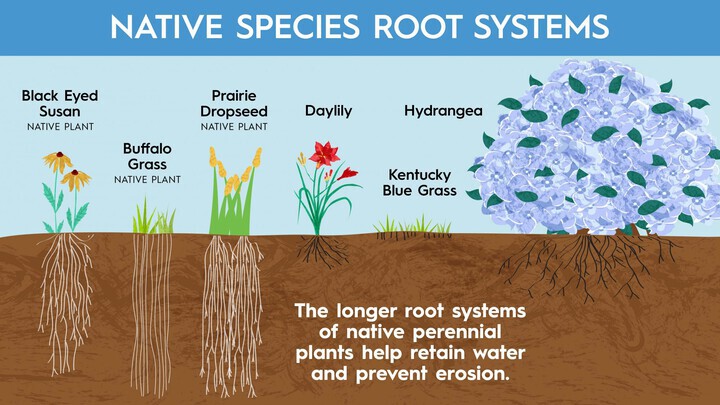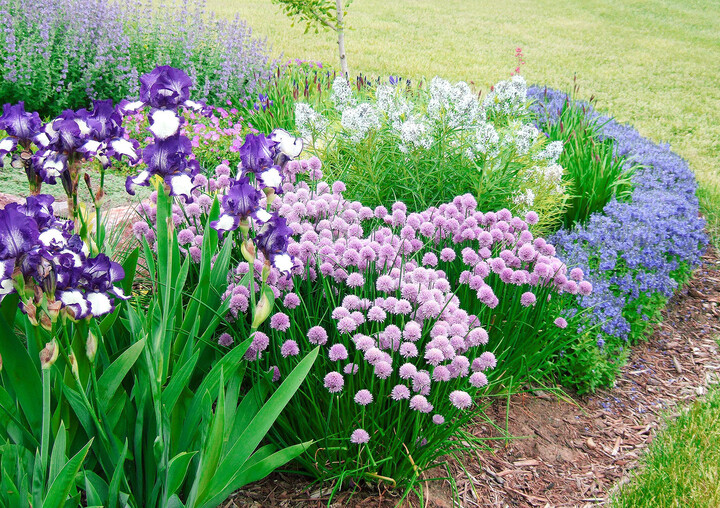As stronger storms, widespread drought, and big temperature swings become more common, you can still create a beautiful, resilient garden by choosing the right plants for your region.
One of the most exciting things about gardening is that you have so many choices when it comes to what you can grow. For starters, think flowering annuals and perennials, or cacti and succulents, or herbs and other edibles. But within these groups of plants, some are definitely tougher than others when it comes to standing up to cold snaps, heat waves, and other weather extremes like droughts and severe storms. No matter which part of the world you call home, you can create a beautiful landscape with plenty of variety and style. Just follow these tips for selecting plants that will thrive even under the harshest conditions.

Let Your Garden Go Wild
Nature is wild and it wants to stay that way. That’s why it can take a small fortune and a whole lot of backbreaking work to create a manicured yard. And even then, you'll still probably lose a few plants that are picky about their growing conditions like acid-loving azaleas or cold-loving tulips. But if you stroll through your local nature preserve, chances are you’ll see many plants thriving without any human input like watering, mowing, and trimming. Many of these same species would be just as happy to flourish in your own garden.
The toughest plants are usually native species that have lived in your area for thousands of years, so they're well adapted to your local growing conditions. They tend to have deeper and more extensive root systems than non-native plants like daylilies and hostas, which helps them reach water farther down in the soil and withstand less than ideal growing conditions like heat waves and drought. Those long roots also help hold soil in place better so it doesn't erode as much during heavy rains. However, the more you can mimic nature when growing natives, the better.

Plants native to prairies, for example, tend to grow best when planted shoulder to shoulder, holding each other upright even in strong winds or heavy rains. Switchgrass, a native commonly found throughout the Midwest, will sometimes flop over when planted alone, but when planted in big groups or with other species, it'll stand tall.
In drier regions, however, plants growing close together may create unnecessary competition for limited water. That means you'd need to do more watering to keep them all happy, which isn't ideal if you're trying to use less water in your landscape.
Many native species also come in a variety of colors, sizes, and other characteristics that make them distinct from the original plant. For example, penstemon is a drought-tolerant, flowering perennial native to North America that's a popular garden plant. “When fully established, it handles heavy clay soils and doesn’t skip a beat even in hot, humid summers and unpredictable winters,” says Dean Dietrich, horticulturist at Lewis Ginter Botanical Garden in Richmond, Virginia. Taking advantage of all that toughness but looking to get some extra color, he likes to plant ‘Dark Towers,' a penstemon variety that has burgundy leaves instead of plain green, and pink flowers instead of white.

While natives and their varieties tend to be some of the toughest and most resilient plants you can grow, a few of them can get a little out of control. It’s always a good idea to check if an unfamiliar plant, native or otherwise, is considered invasive or aggressive in your region before adding it to your garden.
Perennials or Annuals
Perennials are plants that live two or more years, while annuals grow from seed, flower and make more seed, then die off in a single year. It's a good idea to grow perennials (plants that die back to their roots each fall and resprout in the spring) like hostas, black-eyed Susans, and catmint where you can, rather than annuals. It'll save you money because you won't have to buy new plants each year, and perennials tend to be more resilient than most annuals through drought, big temperature swings, and other damage. Even when knocked back to the ground by weather extremes, their more extensive root systems help perennials regrow more easily.

This advice applies to perennial fruits, vegetables, and herbs, too, when compared to growing annual crops like tomatoes, squash, and lettuce. Common sage and thyme are far more drought-tolerant than tender basil or cilantro, for example. Brambles like blackberries and raspberries are capable of providing more fruit than one household can eat in a single season, while their wiry stems can withstand powerful winds. Rhubarb and asparagus will continue to multiply year after year, even if they experience a season of drought or a sudden cold snap. Go ahead and grow annual veggies and herbs if you want to, but it can be a good idea to mix in more resilient edibles while you’re at it.
Drought-Tolerant Options
According to drought.gov, more than 50% of California experienced drought conditions from 2011 to 2019. The resulting water restrictions throughout the state meant that many residents had to rethink their thirsty green lawns. “Here in Southern California, it has become well-accepted we need to adjust our landscapes to be better suited for not only our current climate, but also the climate that will be our future, and this actually broadens the possibilities of what our gardens and yards can look like,” says Andy Siekkinen, botanist and grower outside of San Diego.
For many Californians, this means using more drought-tolerant plants, a solution gardeners across the country also can implement to conserve water. Cacti and succulents are obvious examples of plants capable of surviving with little water, and some species such as Adam’s needle, beehive cactus, and prickly pears can provide that Southwest look while being hardy even in the Upper Midwest. But there are many more perennials, shrubs, and trees that also can go long periods without water.

As a general rule of thumb, look for plants that come from drier regions such as prairies and Mediterranean climates. Species from these places often have thick or leathery leaves, aromatic resins, and slower growth that translates to fewer pests, less watering, and little to no trimming. Some, like rosemary and lavender, for example, fit into this category and are even edible.
Tough Trees
Trees are centerpieces in most gardens, so you want to choose species that will last (especially because downed limbs can damage your home and garden). In addition to providing shade and making your landscape more interesting, trees help the environment too. According to the USDA Forest Service, planting trees can help filter groundwater and improve its quality, lessening runoff and erosion. And even one or two trees in your yard can help reduce your annual energy bill; one tree planted on the west side of your house can decrease your energy bill by 3% in five years, according to the Center for Urban Forest Research.
Severe weather can do heavy damage to even the strongest trees, but those that fare the best grow slowly and produce denser wood. Trees like poplars, mulberries, and maples produce shade within just a few short years, but because of their quick growth, they usually have weaker wood and can be prone to rot. Their speedy growth also uses more water, and they pull greater amounts of nutrients from the soil. Better choices are slower growing trees like drought-tolerant oaks and pollinator-friendly lindens.
Oaks and lindens are large groups of trees with both native and non-native species, so planting native ones is usually going to be your best bet. For example, white oaks grow wild across the eastern half of the country, adapting to climates as different as those in Maine and Texas. Plus they're key to the survival of local wildlife: Their acorns provide food for some species of birds, and the trees' bark has been found to provide a habitat for over 500 species of moths and butterflies in the Mid-Atlantic region.
Gardening in an increasingly unpredictable climate doesn't mean you have to completely revamp your landscape. Instead, with a few smart swaps, you can create a garden that will last for years while also benefiting the local environment. As you're shopping for new perennials, shrubs, and trees, make sure to look for ones that will thrive, no matter what extreme weather comes your way.